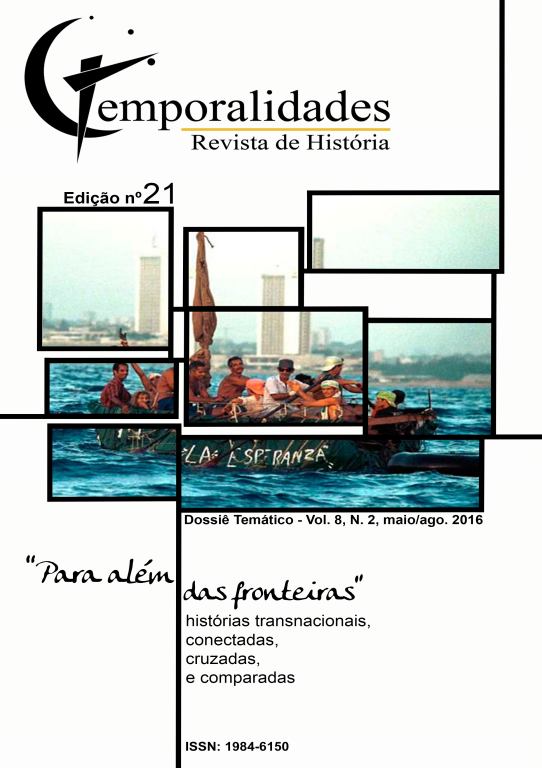O perfil socioeconômico das mulheres forras da vila de Pitangui (1750-1820)
Palavras-chave:
Mulheres forras, Vila de Pitangui, SociabilidadeResumo
Este artigo tem como objetivo apresentar uma breve análise acerca do perfil social e econômico das mulheres forras da vila de Pitangui e de alguns arraiais de seu termo, pertencente à comarca do rio das Velhas, capitania de Minas Gerais, no período de 1750 a 1820. Para tanto, utilizamos como fontes primárias testamentos, testamentárias, inventários post mortem e ações cíveis, com o intuito de investigar o cotidiano, o universo material e as redes de sociabilidade em que estavam inseridas. Essas libertas se envolveram nos ofícios da mineração, pequeno comércio, costura e demais ocupações que o ambiente urbano propiciava. Através do trabalho, algumas conseguiram acumular bens de valor como casas de morada, cativos, ouro lavrado, jóias e vestuário de luxo, e desta forma, maior visibilidade social em relação às demais pessoas de cor.
ABSTRACT:
This article aims to present a brief analysis about the social and economic profile of manumited women in the Pitangui village, and some tents of his term, belonging to the region of the Velhas River, in the captaincy of Minas Gerais, in the period of 1750-1820. Thus, we use as primary sources wills, testamentary, post mortem inventories, in order to investigate the daily life, the material universe and the social networks in which they were inserted. Those freed-women were involved in the trades of mining, small businesses, sewing and other occupations that urban environment rendered. Through work, some have managed to accumulate valuable property as dwelling houses, slaves, tilled gold, jewels and luxury clothing, and thus greater social visibility in relation to other people of color.
KEYWORDS: Manumited women, Pitangui village, Sociability.
Downloads
Downloads
Publicado
Edição
Seção
Licença
O(A) autor(a), para fins de submissão à revista Temporalidades, deve declarar que o trabalho aqui submetido é de autoria do mesmo e nunca foi publicado em qualquer meio, seja ele impresso ou digital.
O(A) autor(a) também declara estar ciente das seguintes questões:
Os direitos autorais para artigos publicados na Temporalidades são do autor, com direitos de primeira publicação para o periódico;
Em virtude de aparecerem nesta revista de acesso público, os artigos são de uso gratuito;
A revista permitirá o uso dos trabalhos publicados para fins não-comerciais, incluindo direito de enviar o trabalho para bases de dados de acesso público.
A Temporalidades adota a licença internacional Creative Commons 4.0 (CC BY).







